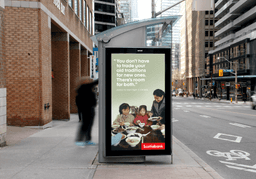The past few years have been filled with social, economic, and environmental changes that have caused a significant shift in consumer shopping habits. People of all ages have been re-evaluating how they spend and save their money, and it’s only expected to amplify as we head toward a recession. In fact, two-thirds of U.S. consumers said their biggest concern right now is rising inflation, according to a McKinsey study.
But these changing consumer trends aren’t all due to doom and gloom. A 2021 study from Publicis Groupe found that 77% of people went through a major life change over the past few years, achieving milestones like purchasing a home, changing careers, or having kids – and with changing lifestyles come changing habits, values, and buying needs.
These shifts in behaviour are forcing brands and advertisers to adapt more quickly, and they need to be more responsive to consumer needs, especially in terms of brand values and sustainability. As a result, more and more marketers are turning to purpose-driven advertising to win back the conscious consumer.
Shoppers are more willing to switch brands over supply chain and price concerns
Empty shelves were common throughout the early days of the pandemic, and while supply chain shortages caused havoc for many brands and retailers, they also created an opportunity for consumers to sample products that they normally wouldn’t have purchased. Consumers who were used to purchasing one specific brand were suddenly unable to access it, forcing them to try something else in its place. As a result, many realized they could use similar products and brands at a fraction of the price. Take toilet paper, for example; shoppers who consistently purchased Charmin or other brand names had no choice but to switch to a generic version when supply chain disruptions led to major shortages. Today, many consumers who sampled other brands during the pandemic have yet to switch back, largely due to inflation concerns and the need for more efficient spending.
Consumers care about brand values, and they’re demanding transparency
As consumers develop higher expectations and become more selective over where they spend, brands must respond by getting even more intentional with their messaging. New research from Harris Poll commissioned by Google Cloud found that 82% of U.S. consumers want a brand’s values to align with their own, and over three-quarters of surveyed shoppers have parted ways with a brand over a conflict in values.
From environmental and political concerns to social action, consumers are more likely to support brands that invest in the issues they care about. In a recent conversation at Digiday’s annual fall Media Buying Summit, Brent Poer, Global Client Lead and President of Publicis Imagine discussed the need for brands to connect with consumers in a meaningful way by focusing on their values and purpose. The past few years have allowed people to reflect on what’s important to them, and brands need to go beyond “slapping a logo” on a cause or idea to truly reach conscious consumers. “Take a stand on it. Brands are going to have to drive longer-term relationships,” he said.
A 2022 Consumer Intelligence Series Survey by PwC echoed this, finding that only 30% of consumers trust companies compared to 87% of business leaders who believe their organization is highly trusted.
The return of purpose-driven advertising
For consumers to truly feel seen and understood by brands, authenticity and relevance must be at the forefront of an organization’s communications. Leveraging purpose-driven advertising creates the opportunity to drive long-term relationships by establishing an emotional connection with the consumer.
But what exactly is purpose-driven advertising?
Purpose-driven advertising goes beyond occasional social media posts covering a current event; it’s defined by a value-focused strategy used by an organization to communicate its alignment with certain values or initiatives. Authenticity is the key to success when it comes to purpose-driven advertising, and brands need to ensure they don’t over-promise or embellish their actions. For example, many brands make big claims over their Environmental, Social, and Governance (ESG) efforts, which can often be cases of greenwashing – and today’s consumers are more intelligent and savvy when it comes to spotting false claims. In fact, Harris Poll found that 77% of shoppers remain skeptical over brand promises, believing that the majority of brands overstate their efforts on initiatives like sustainability.
Patagonia is perhaps one of the best-known examples of purpose-driven branding, integrating its core values into every aspect of the business and becoming known for its social and environmental activism. The brand is so committed to its purpose that it actually encourages consumers to buy less, with anti-consumerism at the core of its marketing strategy. From social media to outdoor advertising, Patagonia’s message remains consistent, embracing its brand purpose in everything it does. And it works – the brand is considered one of the most socially responsible companies in the fashion industry and has a loyal customer base that spans generations. The embodiment of its values extended to the point that founder Yvon Chouinard recently gave away ownership of the brand, donating the entire $3 billion company to fight climate change.
Understanding your audience base will help you deliver meaningful messaging that creates brand loyalty even as consumers tighten their belts. There’s a perception that brands should scale back brand-building in favour of more performance-driven marketing in a tough market, but capturing customer loyalty is essential, even with reduced budgets. Prioritizing the lifelong customer over short-term gain is more profitable in the long run, and brands should take advantage of the fact that competitors may be spending less on advertising to capture a larger share of the story. Certain ad mediums, like Out-of-Home (OOH), are also great for boosting awareness while delivering content that’s relevant to certain communities or demographics. As one of the oldest channels, it’s no surprise that OOH is also the most trusted among audiences. It provides a canvas to communicate messages in the most creative and impactful way, transcending the small screens and amplifying other channels as part of a multi-touch marketing strategy.
In a rapidly changing world, brands are also increasingly pressured to keep up to date with current events, trends, and initiatives. Thanks to programmatic capabilities, creatives can be updated in real-time, ensuring the most relevant messaging is delivered to target audiences and helping keep brands agile. The same ads can be delivered across multiple media channels, like mobile, Connected TV, and social media, driving your message home and creating a full brand experience for consumers.
While establishing a purpose-driven ad strategy doesn’t happen overnight, understanding who your consumers are, what they stand for, and how your values connect with their lifestyles is the key to driving profitable, long-term growth in the most authentic way possible.










